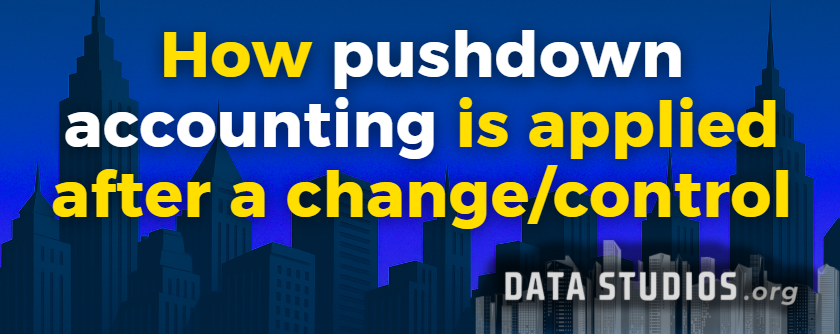How Research and Development Expenses Are Treated in the Income Statement
- Graziano Stefanelli
- 5 hours ago
- 3 min read

Research and development (R&D) expenses are a critical component of financial reporting for companies involved in innovation, product development, and technological advancement. Understanding how R&D costs are classified, recognized, and disclosed is essential for assessing profitability and comparing the financial performance of firms across different industries.
The accounting treatment of R&D expenses varies under international (IFRS) and U.S. (GAAP) standards. These differences can significantly affect reported profits, tax outcomes, and financial ratios, making it crucial for analysts, investors, and executives to comprehend both the rules and the practical implications.
·····
.....
R&D expenses reflect the pursuit of innovation and product development in financial statements.
Research and development expenses arise from activities aimed at creating new products, services, processes, or significant improvements to existing offerings. These costs include salaries of scientists and engineers, laboratory materials, prototype construction, software development, and external research collaborations.
Under both IFRS and US GAAP, R&D expenses are recognized as incurred, reflecting the high degree of uncertainty about future economic benefits. However, certain development expenditures can be capitalized under IFRS if strict criteria are met, whereas US GAAP generally requires all R&D costs to be expensed immediately.
Properly accounting for R&D ensures that the financial statements accurately portray the company's ongoing investment in innovation and do not overstate assets or profitability.
·····
.....
IFRS and US GAAP prescribe different rules for R&D cost recognition and capitalization.
Under IFRS (IAS 38 – Intangible Assets), research costs must always be expensed as incurred. Development costs, however, can be capitalized if the company demonstrates:
Technical feasibility of completing the project
Intent and ability to use or sell the developed asset
Probability of generating future economic benefits
Reliable measurement of costs
Once capitalized, development costs are amortized over their useful life. This treatment is common in the pharmaceutical, software, and technology sectors for projects that progress beyond the research stage.
In contrast, US GAAP (ASC 730 – Research and Development) requires all research and development expenditures to be expensed immediately, with only a few exceptions (e.g., certain software development costs after technological feasibility, or in the context of business combinations).
This fundamental difference means that companies reporting under IFRS may show higher assets and delayed expenses compared to similar firms following US GAAP.
·····
.....
Typical Classification and Presentation of R&D Expenses
Expense Category | IFRS Treatment | US GAAP Treatment |
Research Costs | Expensed as incurred | Expensed as incurred |
Development Costs | Capitalized if criteria met; else expensed | Expensed as incurred (rarely capitalized) |
Amortization of Capitalized Development | Amortized over useful life | Not applicable (except rare cases) |
External R&D Collaboration | Expensed as incurred; may include prepayments | Expensed as incurred |
·····
.....
Example journal entries for R&D expenses and capitalized development costs.
When research costs are incurred:
Debit: Research and Development Expense
Credit: Cash or Accounts Payable
When development costs meet IFRS capitalization criteria:
Debit: Intangible Asset – Development Costs
Credit: Cash or Accounts Payable
As the asset is amortized:
Debit: Amortization Expense
Credit: Accumulated Amortization – Intangible Asset
These entries reflect the distinction between immediate expense recognition and the deferral of costs through capitalization and subsequent amortization under IFRS.
·····
.....
Financial statement impact and disclosure of R&D expenditures.
R&D expenses directly affect the income statement by reducing reported profit in the period incurred. Capitalized development costs, when permitted, shift the expense into future periods via amortization, impacting earnings trends and profitability metrics.
Key financial ratios influenced by R&D accounting include:
Operating Margin: Immediate expensing lowers current margins but may result in higher future profits if development costs are capitalized.
Return on Assets (ROA): Capitalization increases total assets, altering asset-based performance measures.
Tax Effects: In many jurisdictions, R&D expenses may generate tax benefits, incentives, or credits.
Both IFRS and US GAAP require detailed disclosure of R&D policy, total amounts expensed, and the nature of significant projects. Companies must also explain any changes in capitalization policy or material prepayments for external R&D.
Transparent disclosure enables stakeholders to assess the company’s commitment to innovation and compare R&D intensity across peers and periods.
·····
.....
Operational considerations for tracking and reporting R&D activities.
Effective management of R&D costs requires robust internal controls and project tracking systems. Companies should monitor spending at each project stage, distinguish between research and development activities, and regularly assess the eligibility of development costs for capitalization.
Cross-functional collaboration among finance, technical, and legal teams is essential to ensure compliance with accounting standards and to maximize the value of R&D investments.
For investors and analysts, sustained R&D spending is often a sign of long-term strategy, but high expenses without commercial results may signal inefficiency or strategic risk.
Accurate and consistent treatment of R&D expenses ensures that financial statements reflect the company’s real innovation efforts and enable meaningful comparisons with industry peers.
·····
.....
····· FOLLOW US FOR MORE. ·····
····· DATA STUDIOS ·····




